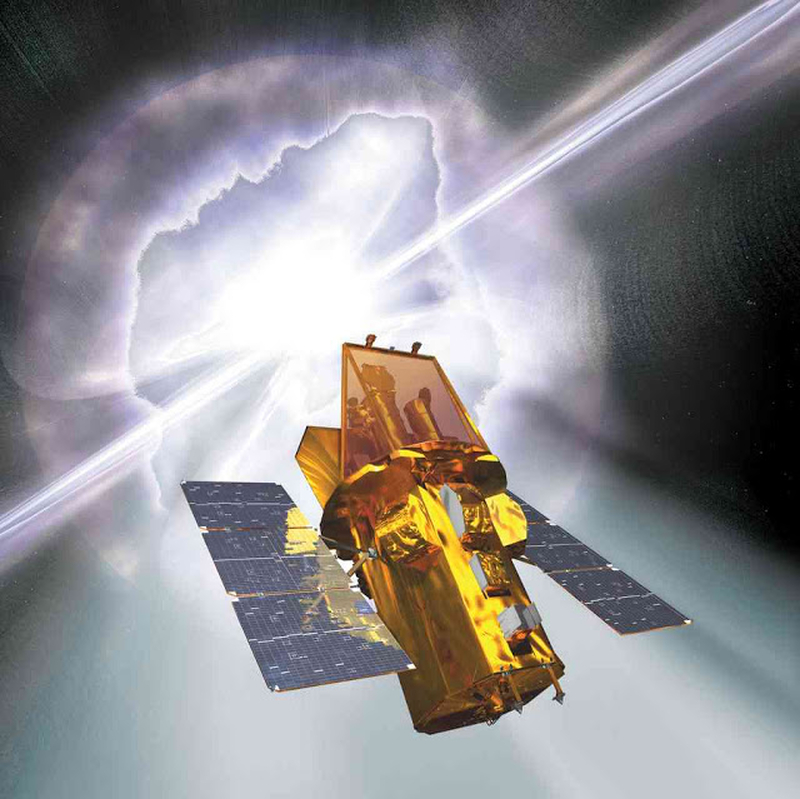
 Credit: NASA
Credit: NASA
A Swift Decade
Gamma-ray bursts are the most energetic events we can observe today. GRBs are brief, intense flashes of high-energy radiation from space, and for years were one of astronomy's biggest mysteries. First observed in July 1969 (but first reported in 1973), GRBs remained mysterious for many years, because these brief, intense flashes of Gamma-rays are hard to localize in space. Understanding GRBs requires the capability of near-simultaneous observations at Gamma-ray, X-ray and optical wavelengths. Enter NASA's Swift space observatory, shown above. Swift includes three telescopes, one operating in the Gamma-ray range, one in the X-ray range, and one in the optical and ultraviolet. The Gamma-ray detector, the Burst Alert Telescope, provides detection and localization of Gamma-ray bursts in a wide field of view by using the Gamma-ray shadows cast by a burst. Once found by the BAT, Swift can rapidly slew to put the source in the field of the X-ray Telescope and the UV and Optical Telescope, to measure the afterglows of the burst at those energies, and to provide an accurate position for subsequent follow-up by Swift and other space- and ground-based telescopes. Swift, launched in November 2004, has revolutionized our understanding of GRBs, and demonstrated that GRBs are associated with the formation of black holes, either through the collapse of massive stars or the merging of neutron stars. In Swift's decade of operation, it has made 315,000 individual observations of 26,000 individual targets, and has detected over 900 GRBs. Swift is very versatile too. When not hunting GRBs, Swift uses its complement of telescopes to study high-energy emission from accreting supermassive black holes in active galaxies and see them swallow the occasional star, map galaxies in the ultraviolet and in X-rays, detect and study violent high-energy emission from stars, and watch the Milky Way's supermassive black hole, Sgr A*, for long-term changes.
Published: November 24, 2014
<
HEA Dictionary ● Archive
● Search HEAPOW
● Other Languages
● HEAPOW on Facebook
● Download all Images
● Education ● HEAD
>

Each week the HEASARC
brings you new, exciting and beautiful images from X-ray and Gamma ray
astronomy. Check back each week and be sure to check out the HEAPOW archive!
Page Author: Dr. Michael F. Corcoran
Last modified Tuesday, 27-Feb-2024 10:13:31 EST


